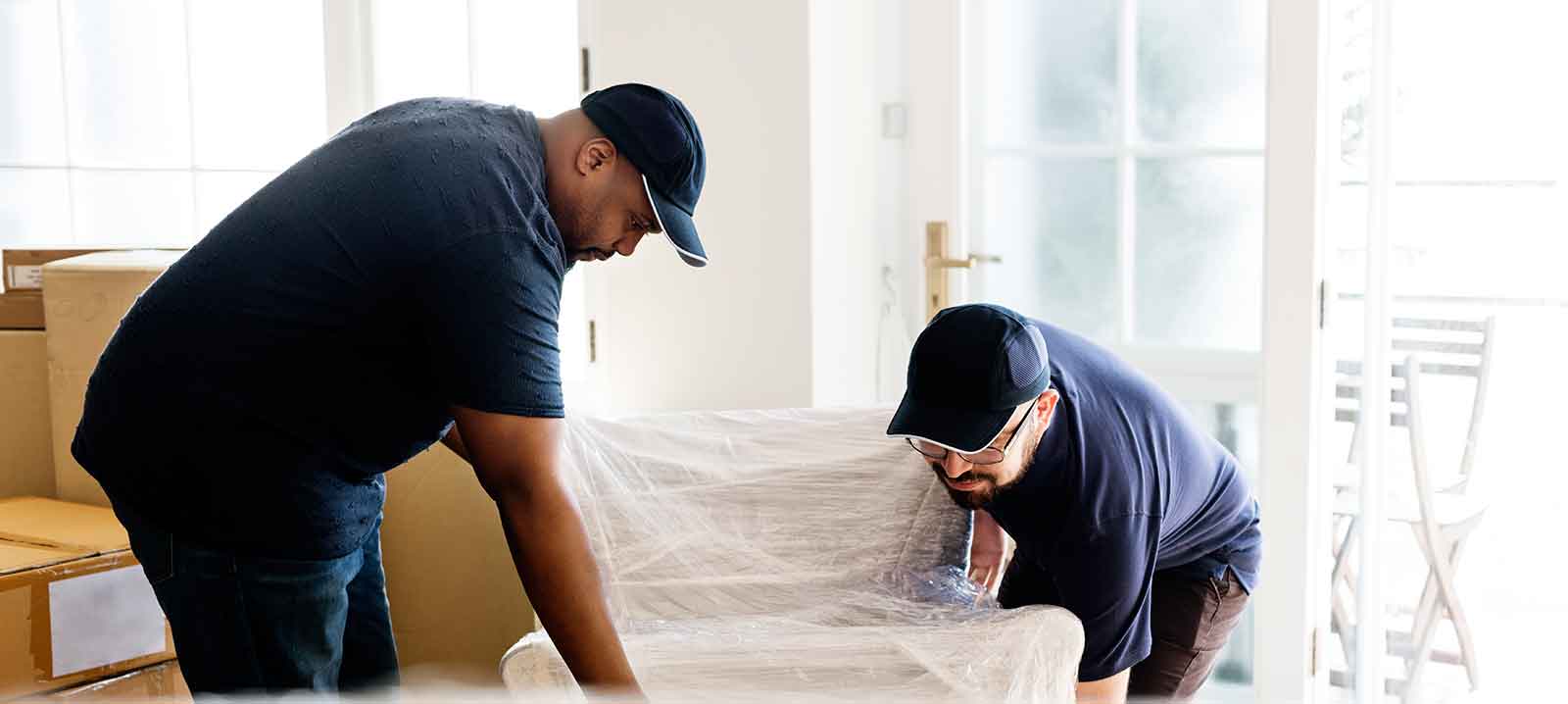Moving into a new-build home feels like a fresh start. Everything is clean, unused, and exactly how you imagined it. Yet behind that excitement, there are a few realities worth knowing. A new home is not always ready in the same way an older one might be, and understanding what to expect can save time, stress, and confusion. As a moving company in Edmonton, we’ve helped many families move into newly constructed homes and seen both the good surprises and the avoidable frustrations.
Understanding the Final Stages of Construction
When a builder hands over the keys, the home is typically move-in ready but not necessarily complete in every detail. Some small items, known as “deficiencies,” may still need attention. These can include things like paint touch-ups, minor drywall repairs, or exterior landscaping that must wait until warmer months.
It helps to walk through the home with the builder before the move. Make a detailed list of what still needs finishing and confirm timelines for completion. This inspection is also a good time to check whether all utilities are connected, as some services like internet or gas may still require activation. By clarifying these points early, you can plan your move and setup more efficiently.
Planning Your Move-In Around Possession Date
Possession day can shift in a new-build home. Construction delays, weather, or last-minute inspections can affect the timeline. Before scheduling movers or deliveries, confirm your possession date is finalized. If you’re selling your current home, try to include flexibility in your closing date or arrange temporary accommodation just in case the builder needs a few more days.
We often recommend giving yourself a small buffer—at least two to three days between the confirmed possession and your scheduled move. This allows time for any cleaning, setup, or last-minute fixes before the heavy lifting begins.
Preparing for the First Few Weeks
Living in a new-build home feels different from settling into an older one. The air can be drier, the paint can still cure, and new materials continue to adjust to Edmonton’s climate. It’s normal to notice small changes such as minor settling cracks or wood expansion. These are not defects but part of the natural adjustment process of a new home.
Running a humidifier can help maintain balance in the indoor air, especially during the first winter. Keep an eye on temperature settings as well, since HVAC systems in new homes might need small tweaks before finding the perfect comfort level.
Managing Deliveries and Large Items
Most new neighborhoods in Edmonton are still developing. Roads might be unfinished, driveways may not be paved, and sidewalks could be under construction. This can make moving trucks, furniture deliveries, and large appliances harder to navigate.
It’s wise to visit the site a few days before your move to see the access routes. If the street isn’t fully open, talk to the builder or site supervisor about the best place for movers to park. In some cases, moving trucks may need to stay on the main road while smaller vehicles or dollies carry items to the house.
If you’re planning to bring in multiple deliveries—appliances, furniture, window coverings—schedule them after the main move. This prevents crowding in doorways and protects new flooring from heavy foot traffic.
Setting Up Utilities and Services
Unlike resale homes, utility connections in new builds are not always ready by default. Electricity and water are typically running, but internet, cable, and garbage collection might require setup through the city or private providers.
Contact each utility company at least two weeks before your move-in date. In Edmonton, you can set up accounts for power, water, and waste collection through EPCOR. Internet and cable providers may need access to wiring panels, often located in the basement or garage. Keeping all connection appointments within the first few days ensures your home becomes fully functional quickly.
Protecting Floors and Walls During Move-In
New flooring, freshly painted walls, and delicate trim can easily get scratched or scuffed during a move. Using floor runners, corner protectors, and clean moving blankets can prevent damage before it happens.
If your builder allows, cover high-traffic areas with protective plastic or cardboard before moving day. Place furniture pads under heavy pieces to avoid leaving marks on tile or hardwood. Taking these small steps early saves time and money on touch-ups later.
Getting to Know the Neighborhood
New developments in Edmonton often feel quiet at first. Landscaping, street lighting, and sidewalks may still be in progress, and not all homes around you will be occupied yet. This early stage is a good time to meet your new neighbors, as most people are settling in at the same pace.
Pay attention to any homeowner association (HOA) guidelines or community rules. Some developments have specific standards for fencing, exterior colors, or parking that you’ll want to follow. Joining community groups or local social media pages can help you stay updated on construction progress, garbage pickup schedules, and upcoming amenities.
Adjusting to a New-Home Warranty
Most new homes in Alberta come with a warranty program that covers different parts of the house for set periods. Generally, the warranty covers labor and materials for one year, major systems like plumbing and electrical for two years, and structural components for ten years.
Keep your warranty paperwork accessible and note important deadlines for inspections or claims. Builders often require homeowners to submit lists of any issues within specific timelines, such as 30 days and one year after possession. Recording these early helps you resolve problems before they grow.
Handling Seasonal Work and Landscaping
If you move in during winter, exterior work like grading, sod installation, or driveway paving may be postponed until spring. Builders usually return once the ground thaws to complete these tasks. In the meantime, avoid storing heavy objects on unfinished ground to prevent sinking or uneven settling.
When landscaping becomes your responsibility, consider waiting until the home has settled for a few months before planting trees or pouring concrete pads. This ensures proper drainage and reduces the risk of cracks or shifting.
Planning Storage and Organization Early
New builds often include generous space, but it’s easy to fill it quickly. Before unpacking, decide which areas of the home will be used for long-term storage. Label boxes clearly and keep seasonal items together.
If your possession date arrives before the garage or basement is fully finished, use plastic bins instead of cardboard to protect belongings from dust or moisture. Creating a layout for where each item goes before unpacking makes the entire process smoother and prevents clutter from piling up.
Coordinating with a Reliable Team
A move into a new-build requires extra coordination, especially when the home and neighborhood are still being completed. Having a team that understands these challenges makes a big difference. A dependable moving company in Edmonton will know how to manage restricted access, protect brand-new finishes, and handle last-minute changes with care.
If you’re planning your move and need help organizing the schedule or logistics, you can always contact us for support and practical guidance. We help make the process easier from start to finish so that you can focus on settling into your new home instead of worrying about the details.
FAQ
What should I check before moving into a new-build home?
Inspect all major systems including electrical outlets, HVAC, and plumbing. Confirm that all utilities are active, appliances work, and there are no visible leaks or cracks. Walk through with the builder to document any unfinished details.
Why does new paint or drywall sometimes crack after moving in?
Small cracks are normal as the home settles and materials adjust to temperature and humidity changes. These can be repaired easily during your warranty service period.
Can I move into my new-build home before the final inspection?
It’s best to wait until the builder confirms all safety inspections are complete. Moving in too early can delay final approvals and potentially void certain parts of your warranty.
What if my driveway or yard isn’t finished yet?
Builders often complete these tasks in spring or summer when weather allows. In the meantime, be cautious about parking or storing heavy items on unfinished areas to avoid damage.
How soon should I start landscaping after moving in?
Wait a few months for the ground to settle and for the final grading to be approved by the city. Early landscaping can interfere with drainage and create future issues with foundations or driveways.






